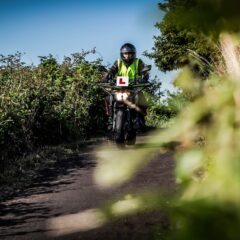
7 Top Motorcycle Accessories
With Christmas just around the corner, you might be wondering what to get your favourite motorcycle enthusiast or even a little something for yoursel...
 Phoenix Motorcycle Training LTD
Phoenix Motorcycle Training LTD
 Phoenix Motorcycle Training LTD
Phoenix Motorcycle Training LTD

Like it or not, roads in the UK aren’t perfect. Motorcycle riding conditions and learning how to manage them is often down to rider technique and experience. Even experienced riders come across unexpected road traps. The only way to avoid them is to stay at home.
Leaning into well-rehearsed rider techniques instead of slipping into instinctive reactions will keep you safe when road traps appear. Gravel on the road, spilt diesel and wandering animals are just a few of the situations that can cause alarm. We take a look at a few less-than-perfect motorcycle riding conditions below and provide advice so you can handle them with confidence.
Potholes, cracks in the tarmac and patches of mud, sand or gravel on the road can be a frightening discovery when you’re riding a motorcycle. The most important thing to do when noting these is not to panic. Although they’re not ideal motorcycle riding conditions (or driving conditions for that matter) they’re not usually considered dangerous either.
Dangerous road conditions are a little more treacherous than potholed surfaces. Spilt diesel, fallen tree branches and traffic light faults come with the risk of immediate danger. These sorts of situations should be reported as quickly as possible to the relevant local council, or if a major road, to the National Highways.
Regardless of whether you are dealing with bad roads or dangerous situations, panicking, freezing or hitting the brakes often only makes your situation worse. Skilled riding means leaning into practised techniques, relying on the stability of your motorcycle and keeping calm.
Few, if any, motorcyclists feel joy at the sight of potholed roads. It’s a similar feeling when sand, mud or gravel covers a section of the road. It can be frightening to discover these road conditions as you lean your bike into a curve.
Potholes can be found on nearly any UK road. Sand, gravel and mud are typically found at farm exits and industrial areas. Road repair sites and secondary roads after heavy rain are also spots where these uncomfortable motorcycle riding conditions are likely.
For most riders, the instinctive reaction when seeing these road traps is to push themselves upright and go hard on the brakes. This is the worst thing you can do.
Hitting your brakes and stiffening your arms to push you away from the handlebars will produce the opposite situation of what you want. Hitting a pothole with a locked front wheel reduces the effectiveness of your motorcycle suspension. Similarly, locked wheels slide on unstable surfaces.
When noticing potholes, open the throttle a touch. This prevents your suspension from compressing completely when you hit it.
If patches of sand, gravel or mud appear when cornering, anchor yourself securely to your bike, lower your shoulders and look far ahead. Remembering your motorcycle turning technique and trusting your bike’s ability is the best approach to patches of unstable road surfaces.
It takes confidence, practice and faith in your machine to allow your motorcycle to do its job on bad roads. This is why we recommend continuing to consciously practice your motorcycle riding technique long after you have gained your motorcycle licence.
One of the worst riding conditions you can come across is an accident. Being first on the scene can be scary. Only 5% of UK road users know how to respond if they come across an accident. You can improve this figure and road safety with the free Biker DOWN! course.
Dangerous roads should also be approached with a cool head. Panicking never improves motorcycle riding conditions. The following hazardous road conditions can be managed safely, but they should also be reported to the appropriate authority at your earliest convenience.
Large diesel spills should be reported to the authorities. Smaller spills are also hazardous but don’t require reporting. Diesel spills transform roads into skating rinks for motorcyclists. And they’re not so great for four-wheeled motorists, either.
Summer roads with diesel spills or after the first rain breaks a period of dry weather can be just as risky. The slippery surface makes both accelerating and braking hazardous.
Looking out for the warning signs of a diesel spill is wise. The first roundabout after a petrol station, the smell of diesel as you wind your way along a country road, or drizzly rain after a few hot summer days should all put you on alert.
When these conditions are noted, anchor yourself firmly to your motorcycle. Keep your arms loose and your gaze far ahead. Extra smooth riding is called for too. Avoiding hard braking or heavy acceleration will make managing these conditions safer.
Fallen branches and trees blocking parts of the road are an unwelcome surprise for motorcyclists and other motorists. Unfortunately, these kinds of hazards don’t come with warning signs. However, being aware of the weather conditions and the surrounding environment will reduce your surprise if you happen to come across them.
Broken branches, fallen trees and similar road debris are more likely to be found after windy or stormy weather. Of course, they are also more prevalent on road sections that cut through wooded areas. However, similar unexpected obstacles can appear on any section of the road.
When these obstacles appear, the adage we keep repeating remains true; don’t panic! Assess the situation and address your anchor points and rider position. Avoid locking your gaze on the obstacle – this will cause you to hit it. Instead, look for a clear path.
Your motorcycle can often handle smaller obstacles better than expected. Wooden pallets or small branches will be uncomfortable and give shock absorbers a workout. But most riders can remain upright and safe when these hazards appear. Other, larger obstacles will need quick reactions – either emergency stopping or using controlled swerving techniques to avoid them.
Large animals such as deer and sheep can create dangerous situations for riders. Smaller animals such as foxes, cats and badgers are less dangerous than you may think. Although it’s uncomfortable hitting any small furry friend at speed, they’ll do little to destabilise your motorcycle if your rider position is anchored and arms kept loose.
Sections of the road where larger animals frequently wander usually have appropriate signs. Take note of these signs and make sure you are alert to these kinds of obstacles. Sheep are more active during the day. You’ll often see them wandering alone in rural areas. Deer tend to be more active at dawn and dusk, and they usually move in groups.
When spotting wild animals on the road, try not to fix your gaze on them. Firmly anchor yourself to your motorcycle, keep your arms loose and manoeuvre your motorcycle around them. Practising your steering technique will make avoiding wild animals on the road easier.
Ideal road conditions don’t exist outside of the motorcycle racing track. Continuing to practise your motorcycle riding techniques develops them into automatic behaviours. This will keep you safe in almost all motorcycle riding conditions and greatly improve your enjoyment on two wheels.

With Christmas just around the corner, you might be wondering what to get your favourite motorcycle enthusiast or even a little something for yoursel...

If you love motorcycle riding, you’ve probably daydreamed about riding a motorbike for a living. A professional racer or stunt rider is OK for some...

Getting a UK motorcycle licence can seem a complicated process. Particularly when compared to a driving licence for a car. Whether you choose the pro...
This website uses cookies to personalise content, ads, and analyse traffic, sharing data with partners who may combine it with other information. See our Privacy Policy for more information.